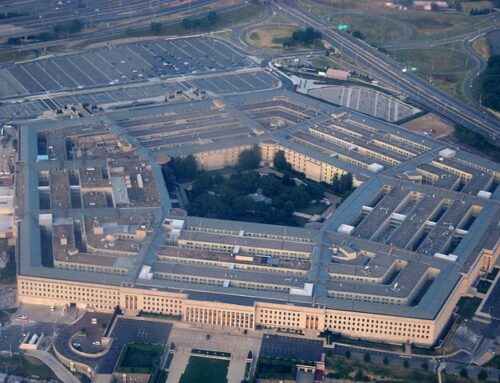At a recent press briefing in the Pentagon, U.S. Secretary of Defense Chuck Hagel and Chairman of the Joint Chiefs of Staff Army Gen. Martin Dempsey were asked about the costs of recent actions against the Islamic State militant group (formerly known as ISIS or ISIL). Neither Hagel nor Dempsey directly responded to the question with what those costs have been to date. Dempsey did go so far as to say, “I think we’re fine for fiscal year ’14 and we’ll have to continue to gather the data and see what it does to us in ’15.”
It’s important to point out that fiscal year 2014 will last just another five weeks. And with a Pentagon fiscal year 2014 base budget of $496 billion and an Overseas Contingency Operations account of more than $85 billion, it’s good to know the Pentagon can meet the current requirements of the threat from the Islamic State. My organization, among others, has been sharply critical of the operations account being used as a Pentagon slush fund to purchase things not directly related to overseas operations. To quote the boilerplate language from the budget request, “The Overseas Contingency Operations Transfer Fund (OCOTF), originally established by Congress in FY 1997, provides the Department with a means to meet operational requirements in support of contingency operations without disrupting approved program execution or force readiness.”
So I want to be very clear: Operations like the ones the U.S. has engaged in over the last few weeks are exactly what the contingency operations fund was established to handle. With $85 billion for the account in the current fiscal year and a pending request of $58 billion for the coming fiscal year, the Pentagon should be well funded to handle this emergent situation.
Our recent analysis shows that if there was a “Department of Overseas Contingency Operations,” it would be the fifth largest federal agency of the U.S. government. As so often happens, large pots of federal funding end up being used for things like the “European Reassurance Initiative” to build the “partner capacity” of such countries as Georgia and Moldova. At a cool $1 billion (split between the Defense and State Departments), it’s hard to understand how such a long-term set of objectives can really be called contingency operations. And I really hope Congress asks a few hard questions about the Air Force portion of the overseas operations request, because of the total $3.8 billion for Air Force procurement in the account, $2.6 billion is for classified programs under the “Other Base Maintenance and Support Equipment” account. It would be very educational to learn how the Air Force is spending that much money overseas on either base maintenance or support equipment.
When asked directly if the Pentagon will need to “reshape” the fiscal year 2015 budget to cover the cost of new operations in Iraq, Hagel replied, “Maybe. Well, depending … yes, you’re constantly shaping a budget to assure that resources match the mission, and the mission and the resources match the threat.”
All Americans should pay close attention to how the response to this new threat is funded. Because any “supplemental” request could be used as an end run around the budget caps Congress and the White House agreed to less than a year ago. And if the administration does present a supplemental budget request, saying it just can’t pay for these operations within the half trillion dollar Pentagon budget, let’s remind Congress exactly what the Overseas Contingency Operations account was established to do.











Get Social